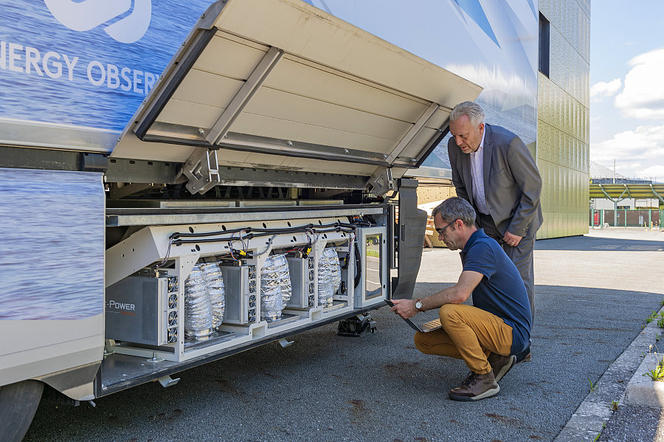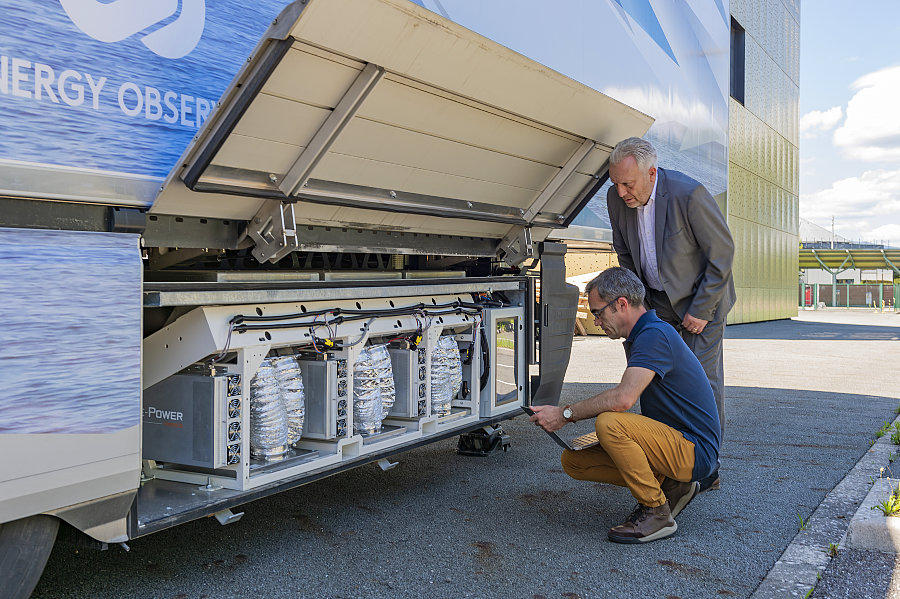You are here
“Innovation is what will get us out of this crisis”

What exactly does the idea of creative destruction encompass?
Philippe Aghion:1 The concept was devised in the 1940s by Joseph Schumpeter, who was in turn inspired by the writings of Karl Marx on the obsolescence of capital. Creative destruction is the process by which innovations are continually produced, making current technologies and activities obsolete. New companies are constantly being founded to compete with existing businesses, creating jobs that replace older trades.
How are you expanding on this concept?
P.A.: Schumpeter’s conclusions were pessimistic. In his view, creative destruction could only lead to a dead end. The innovators of the past, once established at the head of large corporations, would inevitably prevent further innovations from reaching the market, in order to protect their own interests. As a result, the whole system could only grind to a halt. The book we wrote with Céline Antonin and Simon Bunel explains how to break this deadlock: the actions of the government and civil society (consumers, NGOs, etc.) make it possible to foster innovation while preventing established market players from using the profits of their creations to impede the progress of newcomers. We emphasise that in this way, creative destruction can be harnessed to drive fairer, greener and sustained growth.

But doesn’t innovation come at the price of a hardhanded social model that promotes inequalities, as in the United States?
P.A.: Indeed, the US offers a model of capitalism that favours innovation but does not protect individuals against macroeconomic shock, nor from the personal risk of job loss. The Covid-19 crisis offers a striking example. It has destroyed many jobs, and in that country, healthcare coverage and personal income are both very closely linked to employment. As a result, the proportion of the American population living on the brink of poverty has sharply increased during the crisis. This is not so much the case in Western Europe, where capitalism is, of course, less creative but much more protective. That said, we believe it is entirely possible to be more inventive without sacrificing social protection. In the 1990s Sweden and Denmark initiated structural reforms to encourage innovation, in particular by adopting a flat taxFermerA system that applies the same tax rate to all members of a group (citizens, companies, etc.), as opposed to a progressive tax. In France, a flat tax called PFU (Prélèvement Forfaitaire Unique) has been applied to both social charges and income tax on capital gains since 1 January, 2018. on capital gains. But at the same time, they established a so-called ‘flexicurity’ system, under which anyone who is made redundant receives 90% of their former salary for two years while being given training to find a new position. A recent study2 shows that job losses in Denmark have, for example, no negative effect on health.
This model that you advocate, reconciling innovation and social protection, comes at a price… Could it be exported to France?
P.A.: Absolutely. Without giving up our social model, we could create a better ecosystem. First of all, our National Research Agency (ANR) and universities must be granted more funds in order to inspire basic research. Secondly, encouraging disruptive innovation – which often involves a difficult transition from the fundamental stage to concrete applications – means setting up public agencies for the purpose of launching calls for proposals, on the model of the Defense Advanced Research Projects Agency (DARPA) in the US. Three such bodies could be established for energy, digital technology and health. The American culture of research funding is yet another example to follow: venture capital plays an important role in promoting corporate innovation. Lastly, while the research tax credit (CIR) should no doubt be maintained to subsidise R&D costs, it should be aimed more particularly at small and medium-sized enterprises, which tend to be the most innovative.



In France, the ISF solidarity wealth tax3 was eliminated in 2017 and a flat tax, called PFU, was introduced in 2018. But many observers consider these measures unfair, benefiting only the small wealthiest segment of the population. In fact, soon afterwards, the underprivileged showed their anger through the ‘Yellow Vests’ movement…
P.A.: I fully believe in the role of taxation not only for correcting inequalities but also for investing in education, health, social protection, green innovation and infrastructures. However, it is a known fact that in order to reduce inequalities on the scale of an entire country, it is essential to improve social mobility. How can this be achieved? France has the third highest taxes on capital in Europe. Should these be even higher? I doubt it, because the fiscal reforms initiated during the previous presidency (an increased ISF, the introduction of additional tax brackets) did not seem to facilitate such mobility. It would better to encourage the creation of ‘good jobs’, meaning long-term ones that enhance employees’ qualifications. And most of these jobs are generated by leading-edge companies. Consequently, adopting fiscal policies that would discourage innovation is shooting ourselves in the foot.
As for the Yellow Vests, what set off the protests was the announcement of an increased carbon tax just when the price of petrol was rising. This was not an urgent measure, in particular because France, with its nuclear power (controversial as it may be) and hydroelectric plants, is responsible for only 1% of the world’s total carbon emissions. Moreover, it had a very negative impact on low-income suburban populations, who often have no choice but drive for lack of public transport, which made the tax seem very unfair. The government made this decision without taking any notice of civil society, which in the end made itself heard.
Many representatives of civil society believe that economic decline is the only possible response to the current climate crisis. As someone who, on the contrary, champions innovation to boost growth, what do you say to that?
P.A.: First of all, what is meant by ‘growth’ is an improved quality of life. I don’t think anyone would like to see regression reach the point of having their teeth pulled out in the same way as in the 1950s. In addition, between March and May 2020, during the first lockdown, the GDP dropped by 30%, while atmospheric CO2 emissions fell by only 8%. So no, I’m not sure decline is the best way to take up the challenge of climate change. Innovation, on the contrary, makes it possible to invent ways to produce green energy and aim at a good quality of life for everyone. Of course, not all innovation is green: the longer a company’s history in developing polluting technologies, the more likely it is to continue producing them in the future. But a fair carbon tax and subsidies for green innovation, for example, can help the government steer creation towards green technologies. Civil society also has a role to play as a counterweight to corporations and the state. Indeed, governments can be swayed by the power of lobbies opposed to the energy transition, as was blatantly exemplified by the Trump administration.

You have also said that France must reindustrialise. What do you mean by that?
P.A.: When the pandemic took hold, I wondered why France, unlike Germany, did not have enough artificial respirators. The reason is that, over time, we have outsourced their production, whereas the Germans kept control over the entire supply chain within their borders. It is also true of the pharmaceuticals, automobile and electronics industries, plus many other industrial sectors in which France has lost ground over the past 20 years. Today, our country is still a world leader in two sectors: aerospace and nuclear power. With proper industrial and innovation policies – in particular through the creation of public agencies like the DARPA, as previously mentioned – we could, within a reasonable timeframe, become leaders in other fields, such as thermal insulation, computer-assisted design software and agricultural machinery. Encouraging innovation and setting up new businesses will go a long way towards helping us regain control of our production.
Do you believe that new and innovative economic activities will emerge to offset the job losses and bankruptcies caused by the Covid-19 pandemic?
P.A.: I’m convinced that new mechanisms and activities will be introduced to facilitate distance working, online shopping from local shops, and access to healthcare through medical teleconsultations.
Won’t these new jobs in digital technology and robotics benefit only the better-qualified, and thus higher-earners?
P.A.: None of the major industrial revolutions – from steam power in the 19th century to electricity in the first half of the 20th, and more recently the revolution in Information and Communications Technology (ICT) – resulted in mass unemployment. There were counterreactions to the steam engine revolution, like the LudditeFermerThe Luddites were gangs of British textile workers under the leadership of Ned Ludd, who, from 1811 to 1813 and again in 1816, organised attacks to destroy industrial machines, believed to cause unemployment. movement in Britain and the Revolt of the Canuts (silk factory workers in Lyon) in France, but no massive job loss. When electrical power was widely adopted in the US in the 1920s, Keynes predicted that it would have disastrous effects on employment, which never came to pass. The companies that opted for automation turned into net job creators. As they became more productive and therefore more competitive, they needed extra personnel to meet increasing orders. That’s why taxing robots is a bad idea today: it would discourage companies from innovating, ultimately undermining employment. In this situation, it is imperative for the government to support the transition to digital technology and robotisation through a suitable professional training system. I also believe that, as part of this process, companies need to involve their employees in decision-making, for example by giving them seats on the board of directors, as they do in Germany.

Why then, despite progress in artificial intelligence and all that it promises, is growth stagnating in developed countries?
P.A.: The emergence of GAFAM, buoyed by the ICT revolution, was accompanied by skyrocketing growth in the US between 1995 and 2005. The problem is that these companies now reign supreme, invading every sector of the economy to the point of turning other firms away from innovating. Hence the slowdown in productivity since 2005. Again, this is the dilemma of creative destruction: the GAFAM corporations have gradually grown into empires, swallowing up everything in their path, which impedes the creation of new businesses, innovation, and ultimately growth. To prevent this slowdown, governments should have adopted competition policies geared towards ICT and digital technology: specifically, policies that prevent the kind of mergers and acquisitions that keep new and innovative enterprises from entering the market.
In the context of the pandemic, climate change and other tribulations of the modern world, are you optimistic about the future of our economy, of our society?
P.A.: I try to keep an optimistic fighting spirit. There is a way out of the crisis. Innovation will enable us to find new vaccines and treatments to combat the Covid-19 virus. And the adoption of a genuine public health policy will free us from the current ‘stop and go’ approach, alternating between lockdowns and the lifting of restrictions, which discourages companies from investing in innovation, training and good jobs, thus undermining our potential growth and social mobility. Here again, we can devise a way out: other countries, especially in Asia and the Pacific, as well as our German neighbours, have been much better at prevention, which has helped them maintain their long term-growth potential. The market, government and civil society must work together to find an optimal solution, and once again wield the power of creative destruction in the right direction.
- 1. Philippe Aghion is an economist at the PJSE (Paris-Jourdan Sciences Économiques) laboratory (CNRS / EHESS / Université Paris 1 Panthéon-Sorbonne / ENS Paris / INRAE / École des Ponts Paritech) and a professor at the Collège de France. He was awarded the CNRS Silver Medal in 2006.
- 2. Alexandra Roulet, The Causal Effect of Job Loss on Health: the Danish Miracle?, 2018, Mimeo, INSEAD.
- 3. The ISF (Impôt de Solidarité sur la Fortune) was converted into a real estate wealth tax called IFI (Impôt sur la Fortune Immobilière).


















